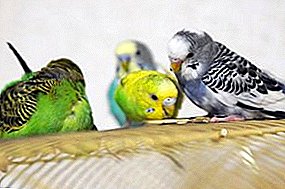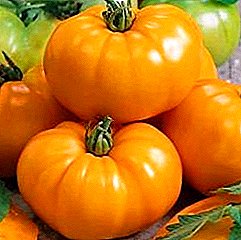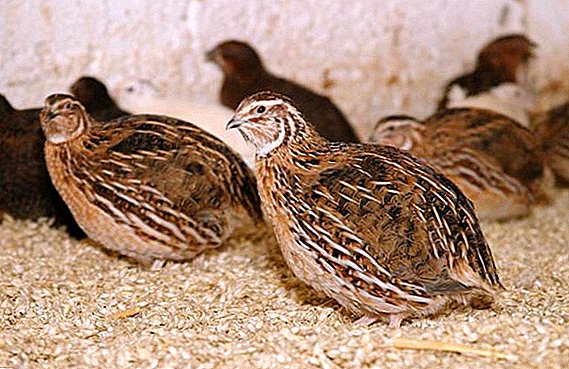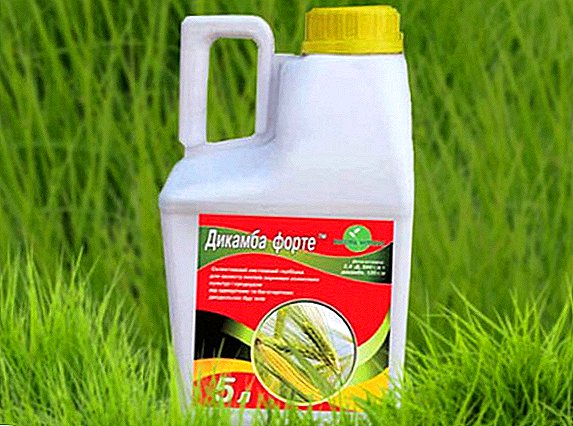
Not everyone is attentive to caring for the health of the birds in their household. And doing so in vain, because there is a high probability of various diseases with a careless attitude and feeding pets.
In this case, there can be everything: from the loss of any benefit received from the birds to their immediate single or even mass death.
One such hazard is intestinal obstruction (intestinal obstruction), or ileus. Let us try to figure out what causes of this misfortune can be, how to avoid them, prevent them, and if your birds are not lucky, what kind of treatment should be given.
Definition of disease
Intestinal blockage is a syndrome in which the advancement of the intestinal contents through the digestive tract, or the accumulation of food in the intestine, which is caused by a mechanical obstruction or an impaired intestinal function, is partially or completely impaired.
This disease is very serious and arises:
- with intestinal blockage with foreign bodies in 80% of cases;
- for tumors - less than 5%;
- when the intestine itself is screwed into (intussusception) or intestines are turned up - less than 5% of cases;
- with intestinal paralysis - 10%.
Intestinal obstruction is observed in all species of birds, but most often this symptom affects young birds of waterfowl in the first month of life: ducklings, goslings.
Spread and severity
 A blockage of intestinal poultry can suffer everywhere. With the disease of one representative there is no danger to others, since the disease is not contagious. But if you do not take appropriate measures in time, eliminating the reason causing the blockage of the intestine in your case, the damage can be great: from the death of a few representatives to the death of all birds in the farm.
A blockage of intestinal poultry can suffer everywhere. With the disease of one representative there is no danger to others, since the disease is not contagious. But if you do not take appropriate measures in time, eliminating the reason causing the blockage of the intestine in your case, the damage can be great: from the death of a few representatives to the death of all birds in the farm.
The danger also lies in the fact that the area clogged with a foreign body, food masses or volvulus possible intestinal necrosis, and this further aggravates the condition of the birds.
Causes of intestinal blockage
Intestinal blockage in poultry can be caused by various causes. The most basic of them are:
- excessive sand, clay and fiber content in the feed;
- poisoning with pesticides;
- tumors;
- cloacal neoplasms;
- egg laying delay;
- the use of poultry in huge quantities of oat and spit shells, grass fibers, which form dense tangles that clog the birds' digestive system, as well as barley, overripe grass, various inedible items: twine, sawdust, bedding peat, etc.
Course and symptoms
 When an intestinal blockage occurs, there are several signs and symptoms that characterize this disease:
When an intestinal blockage occurs, there are several signs and symptoms that characterize this disease:
- decrease in the functionality of the digestive system;
- impaired digestion;
- persistent constipation in birds;
- acute inflammation of the intestinal mucous walls;
- impaired intestinal secretory-motor function;
- colic;
- flatulence;
- oppression.
Often, food stagnation is formed in the branches of the blind processes from the intestines. Then, in the place of stagnation, all the contents dry out and thicken, as a result of which the intestinal permeability is disturbed. Quite quickly, the content accumulates and stretches the intestinal wall, causes irritation of the mucous membrane and causes inflammation.
Soon the stagnation of the contents in the intestines is aggravated by the secondary expansion. Due to the decomposition of the contents and the absorption of toxins into the blood, the liver is disturbed and the phenomenon of general intoxication of the organism becomes more and more noticeable.
 As with all other diseases, it is better to prevent aspergillosis in birds than to heal. Watch your animals feed!
As with all other diseases, it is better to prevent aspergillosis in birds than to heal. Watch your animals feed!In order to view the photos of Fawn, go to page: //selo.guru/ptitsa/kury/porody/myasnie/palevaya-brama.html.
Anemia and blood clots and dehydration are recorded in sick birds.. Due to overflowing intestines, bloating develops, and when the rectum and anus are blocked, an accumulation of feces is found. In young animals in this case, there is a feces and a desire to defecate. In the behavior of birds, there is a general depression, refusal to receive food, difficulty defecation, or none at all.
The course of the disease depends on the age of the bird and the place of the intestine at which the blockage occurred. When the duodenum is blocked, the bird dies within a week. When the anus is blocked, death occurs on the first or second day of endogenous and intestinal intoxication.
Diagnostics
Diagnosis is carried out on the basis of signs and pathological changes in the body. They are determined together with colibacteriosis, pasteurellosis and salmonellosis, and other diseases, in the determination of which bacteriological research is of great importance.
Treatment
 During treatment, it is first necessary to eliminate the causes of the disease and prescribe a dietary regimen or to temporarily exclude nutrition completely. All should be carried out, taking into account the type of bird. Vegetable oil is injected into the digestive system as a laxative. For young stock from 5 to 19 milliliters, for adult birds from 30 to 50 milliliters.
During treatment, it is first necessary to eliminate the causes of the disease and prescribe a dietary regimen or to temporarily exclude nutrition completely. All should be carried out, taking into account the type of bird. Vegetable oil is injected into the digestive system as a laxative. For young stock from 5 to 19 milliliters, for adult birds from 30 to 50 milliliters.
With the accumulation of fecal masses in the cloaca, mechanical cleaning is carried out, and after - treatment with disinfecting solutions.
It is also possible to introduce birds to the digestive tract of antibiotics tetracycline and biomycin in the amount of from 20 to 30 grams per bird.
Prevention and control measures
 As a preventive measure, birds should be provided with the required amount of minerals, vitamins and other trace elements. It is important to give succulent feed and exclude feed that can cause intestinal blockage.
As a preventive measure, birds should be provided with the required amount of minerals, vitamins and other trace elements. It is important to give succulent feed and exclude feed that can cause intestinal blockage.
Waterfowl need to be fed with green succulent fodder, provide water for drinking, ponds and walking. If the food contains spines of cereal shells, it should be sifted before feeding. With additional measures, fine gravel may be added to the feed.
So we came to the end of a small study about the disease of birds, called intestinal blockage. It turned out to be not extremely dangerous, but quite possible and with rather serious consequences, with the wrong attitude towards it.
Watch the health of your pets with due attention and care and do not neglect their condition if something suddenly starts to alarm you. Otherwise, any omission can deprive the birds not only the ability to benefit, but also life.












